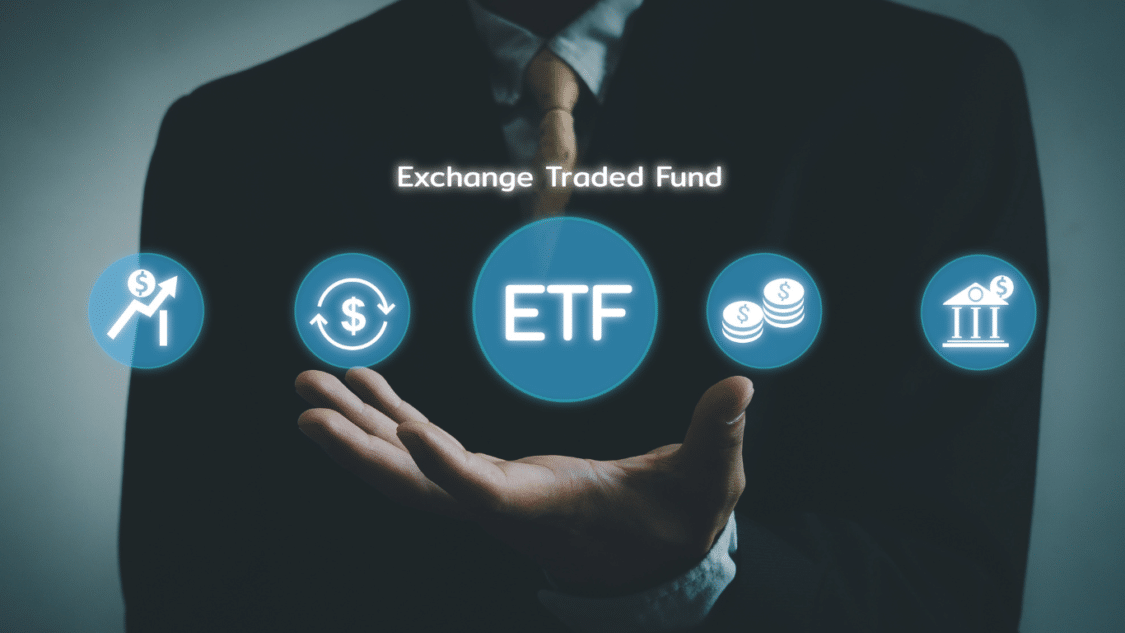- What is a market proxy?
- How does a market proxy work?
- The Impact it has on Investing
- Common Types of Market Proxies
- How to choose the suitable market proxy for your investment strategy?
- What are the limitations of using a market proxy to gauge overall market performance?
- How does the historical performance of market proxies affect investors?
- What is the impact of market proxies related to passive investing and index funds?
Investors who wish to gauge the performance of the stock market as a whole without the complexity of analysing individual stocks often rely on a market proxy. A market proxy is a financial instrument that represents the overall performance of a particular market or index. It is used as a benchmark for investors to assess their investments’ performance and determine if their investment strategy is outperforming or underperforming in the market.
What is a market proxy?
An exchange-traded fund (ETF) or index fund that closely resembles a market index, such as the S&P 500, NASDAQ, or Dow Jones Industrial Average, is commonly referred to as a market proxy. These market indices represent the performance of a particular stock market segment, such as large-cap stocks, technology stocks, or blue-chip stocks.
Market proxy ETFs and index funds are designed to match the performance of their underlying market indices. For example, an S&P 500 ETF seeks to go in the footsteps of the S&P 500 index by investing in the same stocks that comprise the index. As a result, when the S&P 500 index goes up, the value of the S&P 500 ETF should also increase. Conversely, when the S&P 500 index goes down, the value of the S&P 500 ETF should also decrease.
How does a market proxy work?
Market proxies provide investors with an efficient way to invest in a particular market or segment of the stock market. Investors can purchase shares of an ETF or index fund that follows the performance of a certain market index rather than individual stocks. This enables investors to become more familiar with a certain market or industry without researching specific stocks in-depth.
For example, an investor who wants exposure to the tech sector could invest in a tech-focused ETF that tracks the work of the NASDAQ index. This ETF would hold shares in the companies that make up the NASDAQ index, such as Apple, Amazon, and Microsoft. As a result, the investor would gain exposure to these companies and the tech sector as a whole.
The Impact it has on Investing
Market proxies can have a significant impact on investing. Let’s say, if the S&P 500 index is up 10% for the year, and an investor’s portfolio is up 8%, they may feel their portfolio is underperforming. However, it is not a fair comparison if the investor’s portfolio consists of a mix of individual stocks and ETFs that do not track the S&P 500 index.
How to choose the right market proxy?
When choosing a market proxy, it is essential to consider the specific market or segment you wish to invest in and the fees and expenses associated with the ETF or index fund. Evaluation of the market proxy’s amount of diversification is also crucial. A well-diversified market proxy can help reduce risk and volatility in a portfolio.
Common Types of Market Proxies
There are various types of market proxies that investors can use to track the performance of a particular market or index.

- Index Funds – An index fund is a mutual fund or exchange-traded fund (ETF) designed to track the performance of a certain market index, such as the S&P 500, Dow Jones Industrial Average, or NASDAQ. Index funds offer investors exposure to a diversified portfolio of stocks that make up the index they track. They are often used as core holding in a portfolio to provide broad exposure to the stock market.
- Sector Funds – Sector funds are mutual funds or ETFs that invest in a particular stock market sector, such as technology, healthcare, or energy. They allow investors to focus their investments on a specific sector, providing exposure to companies within that sector. Sector funds can be used to take advantage of trends in the market or to balance out a portfolio that is overweight in specific sectors.
- Style Funds – Style funds are mutual funds or ETFs that invest in companies based on their investment style, such as value or growth. Value funds invest in companies considered undervalued by the market, while growth funds invest in companies expected to have strong growth potential. Style funds can diversify a portfolio by investing in companies with different investment characteristics.
- International Funds – International funds are mutual funds or ETFs that invest in stocks outside of the United States. They provide exposure to international markets and can be used to diversify a portfolio. International funds can be further broken down into developed, emerging, and country-specific funds.
- Bond Funds – Bond funds are mutual funds or ETFs that invest in a portfolio of fixed-income securities, such as corporate bonds, government bonds, or municipal bonds. They expose investors to the fixed-income market and can be used to balance out a portfolio that is overweight in stocks.
Market proxies are an essential tool for investors who wish to track the performance of a particular market or index. There are various types of market proxies that investors can choose from, depending on their investment objectives and risk tolerance. By understanding the different kinds of market proxies and their uses, investors can build a well-diversified portfolio that aligns with their investment goals.
How to choose the suitable market proxy for your investment strategy?

Choosing a suitable market proxy is an essential part of an investor’s strategy as it can impact the overall performance of their portfolio. Here are factors to consider when selecting a market proxy:
- Investment Objective – The first step in choosing the right market proxy is to define your investment objective. Are you looking for broad exposure to the stock market, or are you interested in a specific sector or investment style? Your investment objective will determine the type of market proxy that you need to choose.
- Risk Tolerance – Investors with a higher risk tolerance may choose a market proxy that provides exposure to a single sector or investment style. However, investors with a lower risk tolerance may prefer a market proxy that offers broad exposure to the stock market.
- Diversification – Diversification is key to managing risk in a portfolio. Investors should consider the level of diversification offered by the market proxy they are considering. For example, a market proxy that tracks the S&P 500 provides exposure to 500 different stocks, offering a high level of diversification.
- Expense Ratio – The annual cost an investor pays for an ETF or mutual fund is known as the expense ratio. Investors should consider the expense ratio of the market proxy they are considering, as fees can impact the portfolio’s overall performance.
- Tracking Error – The performance of the market proxy and the benchmark index it is intended to track diverge from one another, and this performance discrepancy is known as tracking error. Investors should consider the tracking error of the market proxy they are considering, as a high tracking error can impact the accuracy of the investment strategy.
- Liquidity – Investors should consider the liquidity of the market proxy they are considering. For example, some ETFs may have lower liquidity than others, impacting the ability to buy or sell shares.
Choosing the suitable market proxy for your investment strategy requires careful consideration of your investment objectives, risk tolerance, diversification, expense ratio, tracking error, and liquidity. By considering these factors, investors can select a market proxy that aligns with their investment goals and helps them achieve their desired level of diversification and risk management.
What are the limitations of using a market proxy to gauge overall market performance?
While market proxies can provide investors with a quick and easy way to gauge the overall performance of a market or index, their use has some limitations. Here are some of the key limitations to keep in mind:
A market proxy may not provide a complete picture of the market’s overall performance. For example, a market proxy that tracks the S&P 500 only provides exposure to 500 large-cap U.S. stocks, leaving out mid-cap and small-cap stocks.
Market proxies may also be biased towards certain sectors or industries, impacting their performance. Like an index fund that tracks the technology sector may be heavily weighted towards large tech companies like Apple and Microsoft, which can skew the fund’s overall performance.
In addition, price distortions can impact market proxies, such as large-cap stocks that are overvalued or undervalued. This can impact the overall performance of the market proxy and may not accurately reflect the market’s overall performance.
Market fluctuations, such as changes in interest rates, economic conditions, or geopolitical events can impact market proxies. This can impact the overall performance of the market proxy and may not accurately reflect the market’s overall performance.
Lastly, some investors may prefer active management strategies, which involve picking individual stocks rather than investing in market proxies. Active management strategies may be better suited for investors looking for higher returns or with a specific investment objective in mind.
How does the historical performance of market proxies affect investors?
Exploring the historical performance of market proxies can provide valuable insights for investors. By examining how to market proxies have performed over time, investors can better understand the potential risks and returns associated with different types of market proxies.
One important consideration when exploring historical performance is to examine the length of time for which data is available. Ideally, investors should look at performance data over multiple market cycles to gain a more complete picture of the performance of the market proxy.
Another important consideration is to compare the performance of different market proxies. For example, investors may want to compare the performance of a market proxy that tracks the S&P 500 to a market proxy that tracks the NASDAQ or a market proxy that tracks a specific sector, such as energy or healthcare.
When examining historical performance, it’s important to remember that past performance does not say anything for future results. While historical data can provide useful information about the potential risks and returns associated with different market proxies, it’s important to remember that the market constantly changes, and past performance does not guarantee future results.
Investors should also be aware of other factors that can impact the performance of market proxies, such as fees, expenses, and tracking errors. For example, a market proxy with a high expense ratio may underperform a similar market proxy with a lower expense ratio, even if both proxies track the same index.
In conclusion, exploring the historical performance of market proxies can provide valuable insights for investors. By examining the risks and returns associated with different types of market proxies over multiple market cycles, investors can make more informed investment decisions and select market proxies that align with their investment objectives and risk tolerance. However, investors should also be aware of the limitations of historical performance data and other factors that can impact the performance of market proxies.
What is the impact of market proxies related to passive investing and index funds?

Market proxies have had a significant impact on passive investing and index funds. Passive investing involves buying and holding a diversified portfolio of securities in a way that seeks to replicate the performance of a market or index. Market proxies are often used as the basis for index funds, which are investment vehicles that seek to track the performance of a specific market or index.
One of the main benefits of using market proxies in passive investing and index funds is the ability to achieve broad diversification at a low cost. Investing in a market proxy or index fund can gain exposure to a wide range of securities with a single investment. This approach is often more cost-effective than actively managed funds, which may have higher fees and expenses.
Market proxies also allow investors to gain exposure to specific markets or sectors. For example, an investor who wants exposure to the U.S. stock market can invest in a market proxy that tracks the S&P 500. In contrast, an investor who wants exposure to the technology sector can invest in a market proxy that tracks the NASDAQ.
Another benefit of using market proxies in passive investing and index funds is minimizing tracking errors. Tracking error refers to the difference between the market proxy or index fund’s performance and the underlying market or index it seeks to track. By using a market proxy as the basis for an index fund, investors can minimize tracking errors and more closely replicate the performance of the underlying market or index.
However, it’s important to remember that market proxies havehave limitations. As mentioned earlier, market proxies may have biases towards certain sectors or industries and may not provide a complete picture of the overall market. Additionally, market proxies can be impacted by market fluctuations, price distortions, and other factors impacting their performance.
Market proxies have significantly impacted passive investing and index funds, providing investors with a cost-effective way to achieve broad diversification and gain exposure to specific markets or sectors. While market proxies have limitations, they remain useful for investors who want to pursue a passive investing approach.
What is the role of market proxies in risk management and portfolio diversification?
Market proxies play an important role in risk management and portfolio diversification. By investing in market proxies, investors can gain exposure to a broad range of securities within a particular market or index, which can help to reduce overall portfolio risk.
One of the main benefits of using market proxies in risk management and portfolio diversification is that they can provide a simple way for investors to achieve diversification across multiple securities. Rather than purchasing individual stocks or bonds, investors can purchase a market proxy that provides exposure to a broad range of securities within a particular market or index.
Market proxies can also help investors to manage risk by providing exposure to securities with different risk profiles. For example, an investor who wants exposure to the U.S. stock market can invest in a market proxy that tracks the S&P 500, which includes companies of different sizes, sectors, and risk profiles. Similarly, an investor who wants exposure to the bond market can invest in a market proxy that tracks a broad-based bond index, which includes bonds with different maturities, credit ratings, and yields.
How can market proxies help investors identify market trends and opportunities?

- Gauge overall market sentiment: Market proxies such as the S&P 500 or the Dow Jones Industrial Average can give investors an idea of the overall sentiment in the market. If these indices are trending upwards, it suggests that investors are optimistic about the economy and the markets. If they are trending downwards, it could indicate that investors are worried about economic growth or geopolitical risks.
- Identify industry trends: Market proxies can also be used to identify trends within specific industries. For example, the NASDAQ Composite Index is often used as a proxy for the technology sector. If the NASDAQ is performing well, it could indicate that technology companies are experiencing strong growth and investor interest.
- Compare performance: Investors can use market proxies to compare the performance of different investments. For example, suppose an investor holds a particular stock or mutual fund. In that case, they can compare its performance to that of a market proxy to see if it is underperforming or outperforming the market.
- Monitor market volatility: Market proxies can also help investors monitor market volatility. If a market proxy is experiencing sharp swings in value, it could indicate that investors are uncertain about the market’s direction.
- Identify investment opportunities: Finally, market proxies can help investors identify potential investment opportunities. For example, if a market proxy is trending upwards, it could be a good time to invest in the market. If a specific sector or industry is performing well, it could be worth exploring investment opportunities within that sector.
Whats the relationship between market proxies and other economic indicators?
Market proxies are closely related to other economic indicators because they are often used to represent the overall health of the economy. Economic indicators are statistics that provide information about the current state of the economy, such as GDP, inflation, unemployment, and consumer confidence. Here are some ways that market proxies are related to other economic indicators:
- GDP: Gross domestic product (GDP) measures the overall value of goods and services within a country over a specific period. Market proxies can be influenced by changes in GDP, as a stronger economy often leads to higher stock prices and a stronger market.
- Inflation: Inflation measures the rate at which goods and services prices increase over time. High inflation can be a negative factor for market proxies, as it can erode the value of investments and reduce purchasing power.
- Unemployment: Unemployment rates can impact market proxies by indicating the strength of the labor market and the potential for consumer spending. Low unemployment rates may lead to increased consumer spending and higher stock prices.
- Interest rates: Interest rates can influence market proxies by affecting the cost of borrowing and the attractiveness of investments. When interest rates are low, it may encourage investors to put more money into the stock market, as they can earn higher returns.
- Consumer confidence: Consumer confidence measures the degree to which individuals feel optimistic or pessimistic about the state of the economy. High consumer confidence levels can increase consumer spending and higher stock prices.
What’s the connection between different market proxies and their implications for investors?
Market proxies are financial instruments or indices used to represent the overall market or a specific market segment. The correlation between different market proxies can have important implications for investors. Here are some factors to consider:
- Correlation between different market proxies: Market proxies are often correlated with each other, meaning that they tend to move in the same direction. For example, the S&P 500 and the Dow Jones Industrial Average are highly correlated, representing large-cap stocks in the U.S. market. On the other hand, the NASDAQ Composite Index, which is heavily weighted towards technology stocks, may have a lower correlation with other market proxies.
- Diversification: Understanding the correlation between market proxies is important for portfolio diversification. By investing in market proxies that have a low correlation with each other, investors can reduce the overall risk of their portfolio. For example, suppose an investor holds a portfolio of U.S. large-cap stocks. In that case, they may also consider investing in international market proxies or bonds to diversify their exposure to different market segments.
- Hedging opportunities: Investors may also use the correlation between different market proxies to hedge their investments. For example, if an investor holds a portfolio of large-cap U.S. stocks, they may purchase put options on an index such as the S&P 500 to protect against market downturns.
- Implications for performance: Understanding the correlation between different market proxies can also affect investment performance. If an investor holds multiple market proxies that are highly correlated, they may be exposed to higher volatility and potentially lower returns. On the other hand, investing in market proxies with lower correlation can potentially reduce risk and increase returns.
- Sector-specific proxies: Besides understanding the correlation between broad market proxies, investors should also consider the correlation between proxies that represent specific sectors or industries. For example, suppose an investor holds technology stocks. They may also want to consider the correlation between the NASDAQ Composite Index and other technology-focused proxies, such as the Technology Select Sector SPDR Fund (XLK).
Understanding the correlation between market proxies is important for portfolio diversification, hedging, and investment performance. By considering the correlation between broad market proxies and sector-specific proxies, investors can make more informed investment decisions and potentially reduce risk in their portfolio.
What is the potential impact of technological advancements on the development of market proxies and their use?

The use of market proxies has become increasingly important for investors to measure the performance of the overall market or specific market segments. However, with the rapid advancement of technology, there are potential implications for the future of market proxies and their development and use.
Here are some potential ways in which technology may impact market proxies:
- Alternative data: Technological advancements have led to the availability of alternative data sources that can be used to inform investment decisions. For example, social media sentiment analysis, satellite imagery analysis, and web traffic data can provide insights into consumer behavior and trends. This data can be used to develop new market proxies that are more reflective of consumer sentiment and behavior.
- Machine learning: Machine learning algorithms can be used to analyze large data sets and pinpoint patterns that may not be visible to humans. This technology can be applied to market proxies to develop more accurate and predictive models.
- Blockchain technology: Blockchain technology can potentially be used to develop new types of market proxies that are more transparent and secure. For example, blockchain-based proxies could provide real-time data and allow for more efficient trading and settlement.
- Use of A.I.: Artificial intelligence (A.I.) can create more sophisticated market proxies that can adapt to changing market conditions. AI-based proxies could also be used to provide personalized investment advice to investors.
- Impact of big data: The increasing availability of big data may lead to the development of market proxies that are more complex and granular, with a greater focus on specific sectors or regions.
What is the difference between a market proxy and a benchmark index?
A market proxy and a benchmark index are both used as reference point for measuring the performance of a specific segment of the market or the market as a whole. A market proxy is a financial instrument or index used to represent the overall market or a specific market segment. A benchmark index, on the other hand, is a specific index that is used as a standard for comparison. Benchmark indices are often used to measure an investment portfolio’s performance or evaluate an investment manager’s performance.
Composition: A market proxy may include a broader range of securities than a benchmark index. For example, the S&P 500 Index includes 500 large-cap U.S. stocks, while a market proxy such as the Wilshire 5000 Total Market Index includes all publicly traded stocks in the U.S. market. A benchmark index, on the other hand, is typically more focused on a specific sector or market segment.
Use: Market proxies are often used to assess market trends and to make investment decisions. Benchmark indices, on the other hand, are primarily used as a reference point for evaluating investment performance. For example, an investment manager may compare the performance of their portfolio to a benchmark index to determine whether they are meeting their investment objectives.
Calculation: The calculation methodology for market proxies and benchmark indices can also differ. Market proxies may be weighted differently, with some stocks or sectors having a greater influence on the index. Benchmark indices, on the other hand, are typically calculated based on market capitalization or some other objective criteria.
In summary, while both market proxies and benchmark indices are used as reference points for measuring market performance, the two have important differences. Market proxies tend to be broader in scope and are used to make investment decisions, while benchmark indices are more focused and used primarily to evaluate investment performance.
Learn More About How to Sell NFTs

